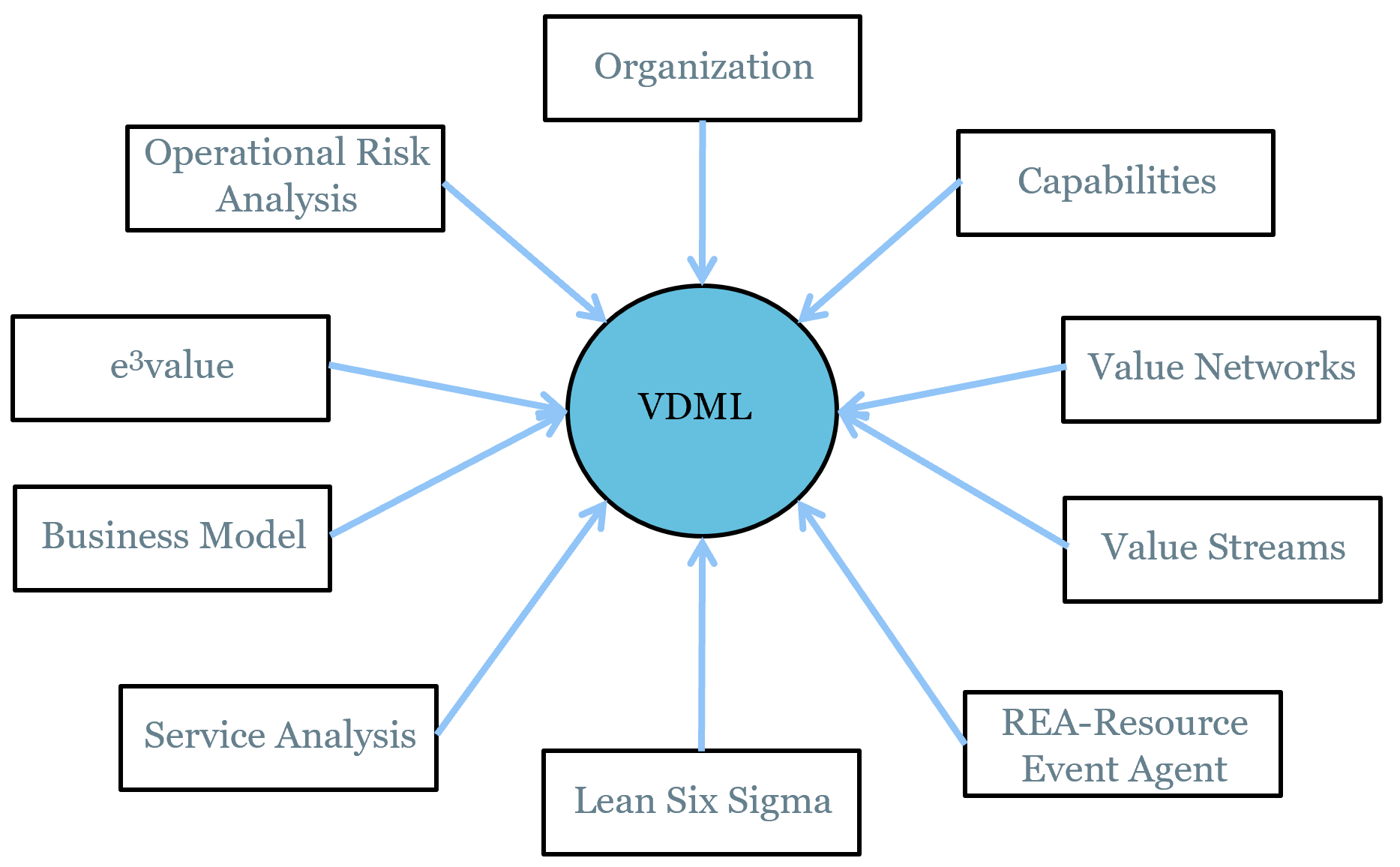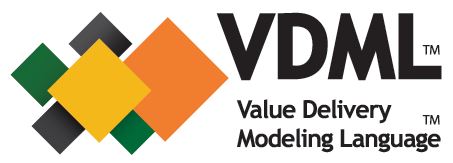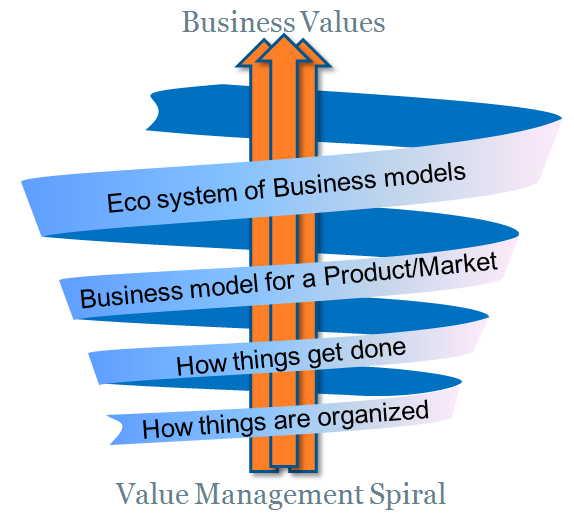VDMbee ontological and methodological roots
The VDMbee Strategyplanner is ontologically grounded. The core of its underlying meta-model is the Value Delivery Modeling Language (VDML). More about VDML can be found on the Object Management Group (OMG) website and on the English wikipedia and German wikipedia websites.
As visualized in the diagram below, VDML, as a standard modeling specification, is the result of harmonious integration of a series of well-respected value modeling and management approaches.

VDML roots
The various approaches, that converged into VDML are:
- Value Networks
- Capability map
- Value Stream
- Business Model Cube
- Resources, Events, Agents (REA)
- Possession, Ownership, Availability (POA)
- e³value
VDML, in fact, formalizes and structures the concepts of a new domain: Value Delivery Management (VDM). It is adjacent to other, existing domains, such as Business Architecture (BA), or Enterprise Architecture (EA), and Business Process Management (BPM).
Concepts like Capability map and Value Stream are in the intersection of both BA and VDM. This enables that VDM tools, such as VMP, can create or import BA/EA artifacts as accelerators for their VDM purpose. Whereas the BA domain is often associated with the de-facto Archimate language, so does VDM have VDML as its standard modeling language (see here for a discussion of these relate).
It is sometimes asked how VDM and its VDML language relate to BPM and its well-known standard process modeling language BPMN. In business terms we can say: VDM is used to create the business case for BPM projects. It supports the necessary value analysis, and can be used to analyze the value impact, in the broader business context, of potential BPM solutions. For a discussion of the two modeling language relate, see VDML Relationship to BPMN.
Coming to the key purpose of VDML, it is important to know that VDML did not combine concepts of the various approaches, as discussed above, into an integrated metamodel, for the purpose of providing just another standard modeling language. But this standard modeling language has been explicitly designed for the purpose of supporting strategic planning and Business Model planning, with more structure and rigor, a higher level of fidelity, and on a continuous basis. For a fundamental discussion of that, see:
VDMbee developed VMP to explicitly support this new way of planning, and developed the Continuous Business Model Planning (CBMP) method to practice it productively. VDMbee also trains and certifies this method, supports partners and universities applying it, and delivers Strategy validation directly as well.
VDML (OMG) great foundation

The purpose of VDML is to provide a standard modeling language for analysis and design of the operation of an enterprise with particular focus on the creation and exchange of value. It provides a view of the operation for business executives, along with a representation for business analysts to link strategy and business models to the activities, roles, and capabilities that run the operation.
VDML is designed to address several critical business challenges:
It creates a robust way to model both tangible and intangible value flows.
It provides the capacity to model complex collaborations and business networks.
It provides a flexible way to model business activities to more readily support continuous transformation in environments of high variability.
It supports more effective shared capabilities optimization and deployment.


